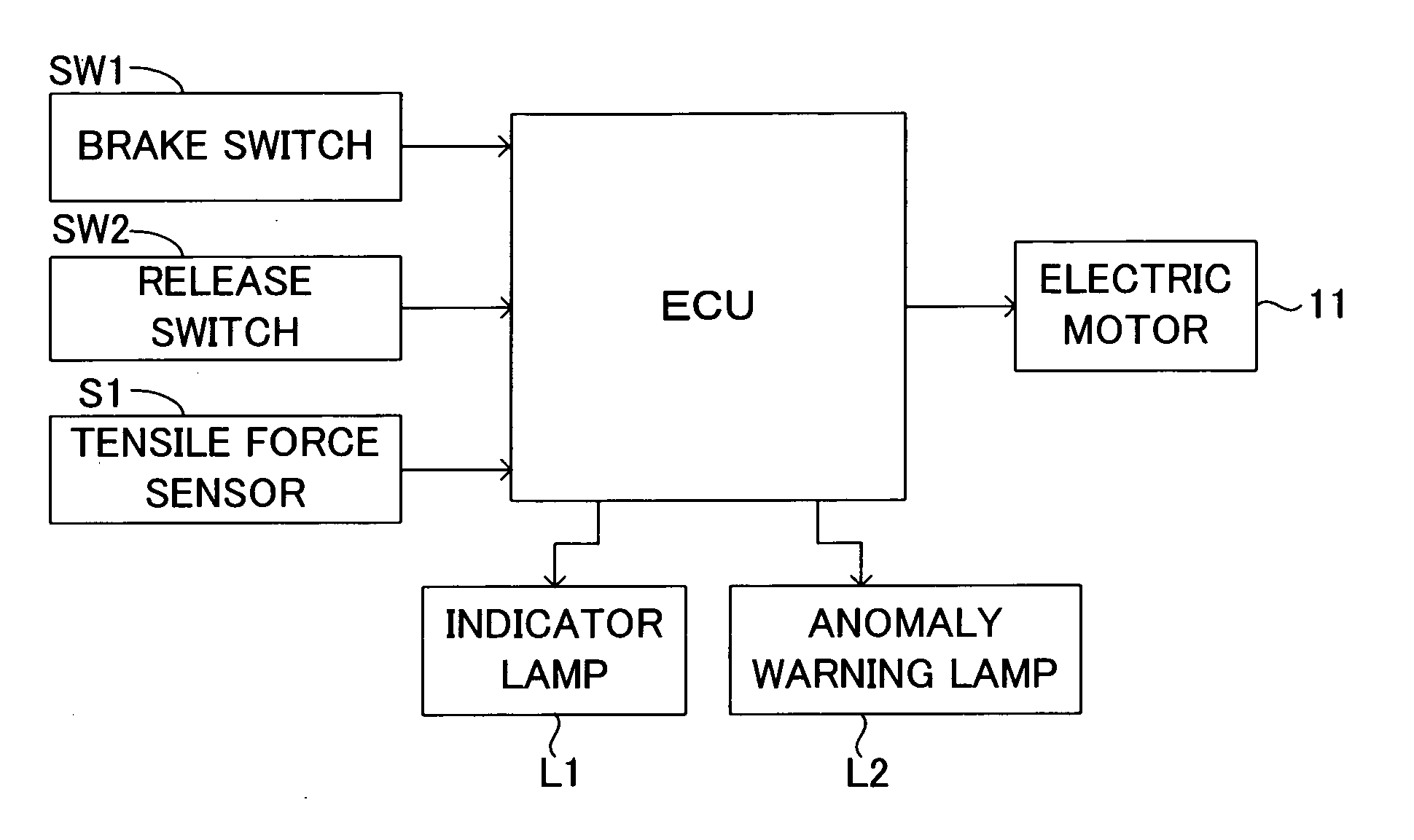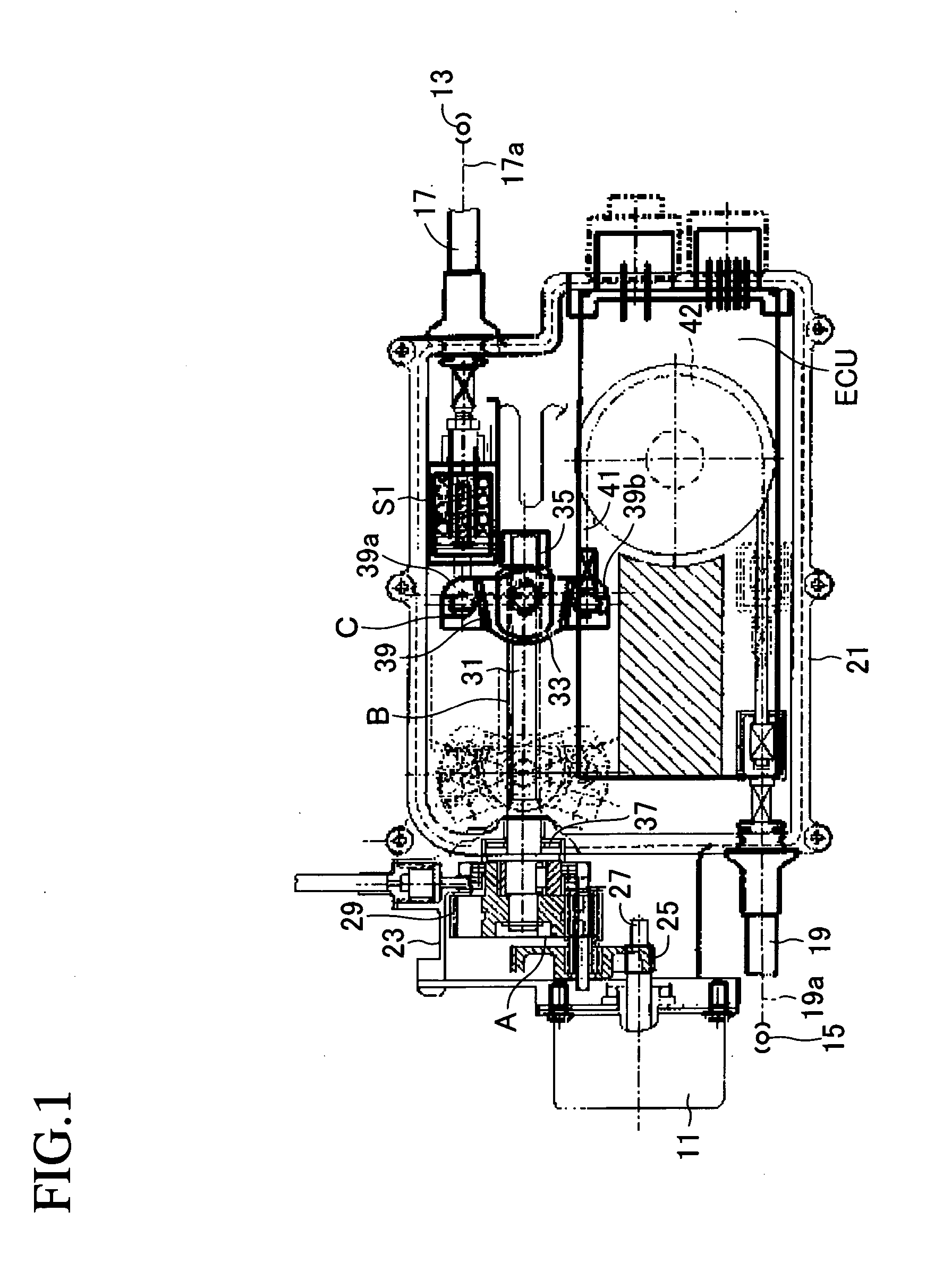Force sensor and motor-driven parking brake apparatus using the same
- Summary
- Abstract
- Description
- Claims
- Application Information
AI Technical Summary
Benefits of technology
Problems solved by technology
Method used
Image
Examples
Embodiment Construction
[0027] An embodiment of the present invention will be described with reference to the drawings. FIG. 1 shows an actuator of a motor-driven parking brake apparatus for a vehicle to which the present invention is applied. This actuator comprises a speed reduction mechanism A for transmitting rotational drive force, which is an output of an electric motor 11, while reducing the rotational speed; a conversion mechanism B for converting into a linear drive force the rotational drive force of the electric motor 11 which is transmitted through the speed reduction mechanism A; an equalizer mechanism C driven by the linear drive force output from the conversion mechanism B and distributing the linear drive force to two output portions; two cables 17 and 19 which are connected to the corresponding output portions of the equalizer mechanism C and transmit the linear drive force to corresponding parking brakes 13 and 15; and an electric control unit ECU for controlling the rotation of the elect...
PUM
 Login to View More
Login to View More Abstract
Description
Claims
Application Information
 Login to View More
Login to View More - R&D
- Intellectual Property
- Life Sciences
- Materials
- Tech Scout
- Unparalleled Data Quality
- Higher Quality Content
- 60% Fewer Hallucinations
Browse by: Latest US Patents, China's latest patents, Technical Efficacy Thesaurus, Application Domain, Technology Topic, Popular Technical Reports.
© 2025 PatSnap. All rights reserved.Legal|Privacy policy|Modern Slavery Act Transparency Statement|Sitemap|About US| Contact US: help@patsnap.com



